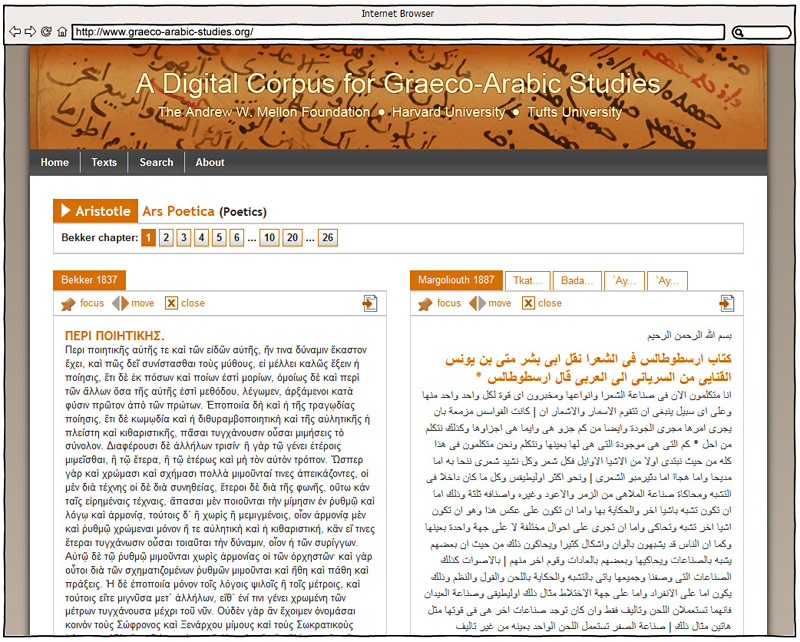A Digital Corpus for Graeco-Arabic Studies
Between the 8th and 10th centuries CE, hundreds of Greek philosophical, medical and scientific works were translated into Arabic. These translations helped shape the development of philosophy and science in the Islamic world. Through later Latin translations, they also exerted some influence in the Latin West.
Most importantly, Arabic translations were crucial for preserving, transmitting and extending ancient Greek thought: many Greek texts were lost in the intervening centuries and are now only extant in Arabic translation. The Arabic translators also had access to manuscripts that were often several centuries older and potentially closer to the Greek originals than those available to editors of ancient Greek texts today.
The Arabic translators’ understanding of their Greek sources was informed by their historical, cultural, religious and linguistic background. Their reading of these texts offers a new perspective on the ancient world that has the potential to enhance our own understanding.
The Digital Corpus, which currently has ca. 1.2M Arabic and 3.3M Greek words, consists of about 230 texts, three fifths of which are Greek and the rest Arabic. The texts range in length from a couple of pages to several hundred pages, and they represent more than 180 works by 28 authors. In addition to Greek and Arabic primary sources, the corpus also contains a number of important Arabic secondary sources, mainly commentaries on ancient Greek writings, important secondary works and major bio-bibliographical sources.
The choice of texts was mainly determined by three factors: the importance of their authors for the Greek-Arabic translation movement; the availability of printed editions; and the copyright status of these editions. The corpus therefore consists for the most part of editions of major authors that were easily accessible and not subject to copyright restrictions. The most important sources for Greek texts were the complete editions of Galen by Karl Gottlob Kühn (1821–1833), of Hippocrates by Émile Littré (1839–1861) and of Aristotle by Immanuel Bekker (1831).
The texts assembled in the corpus cover a wide range of subjects, but as a result of availability and copyright considerations, philosophical and medical works, especially by Aristotle, Galen and Hippocrates, are particularly prominent. The corpus also contains a sizable sample of mathematical texts. Other fields represented by one or more texts are astronomy, biology, zoology and psychology as well as doxography.
Modern editors of most of the Arabic translations included in the corpus have attempted to ascribe or at least date these texts based on internal (style, terminology etc.) and external evidence (information from bio-bibliographical sources etc.) According to these ascriptions, the translators that worked at the height of the translation movement during the second half of the eighth and the beginning of the ninth century are particularly well represented in the corpus, most importantly the members of the circle of translators working with Ḥunayn ibn Isḥāq (d. 873). They created almost all of the medical texts in the corpus, a substantial part of the Aristotelian Organon and a number of texts by Alexander of Aphrodisias. Earlier and later phases of the translation movement, however, are also well represented, e.g. through translations of Alexander of Aphrodisias, parts of Aristotle’s Organon and his zoological writings and many of the pseudonymous texts.
